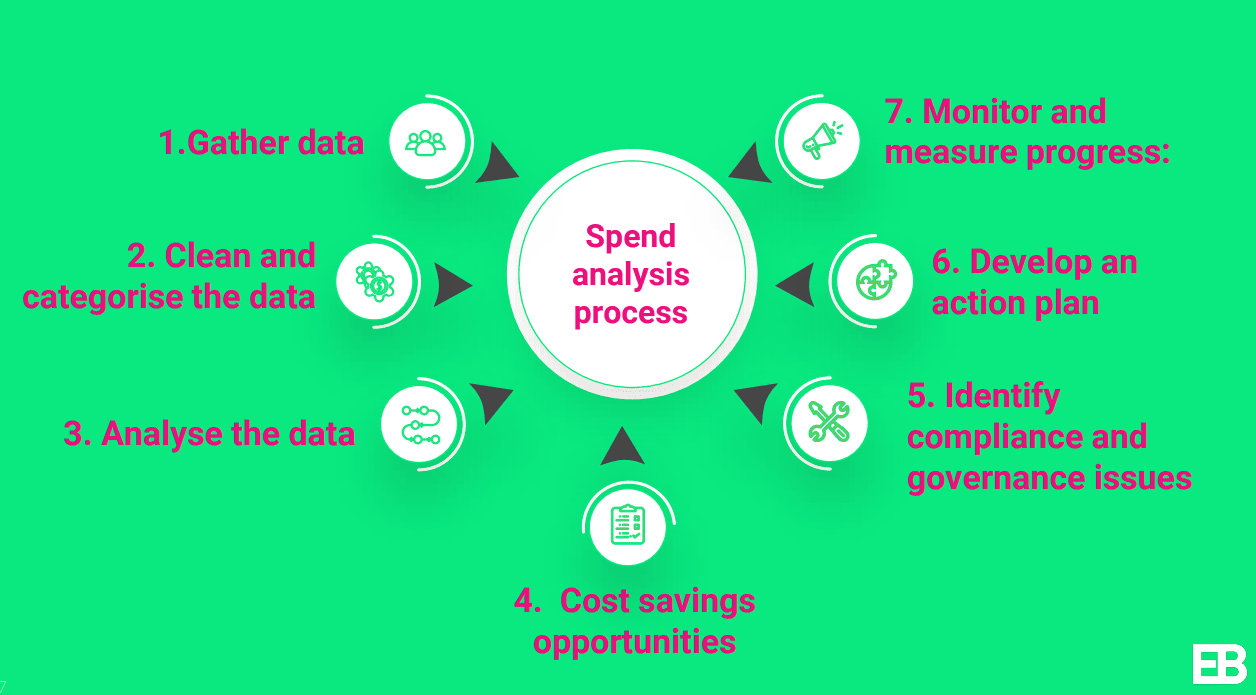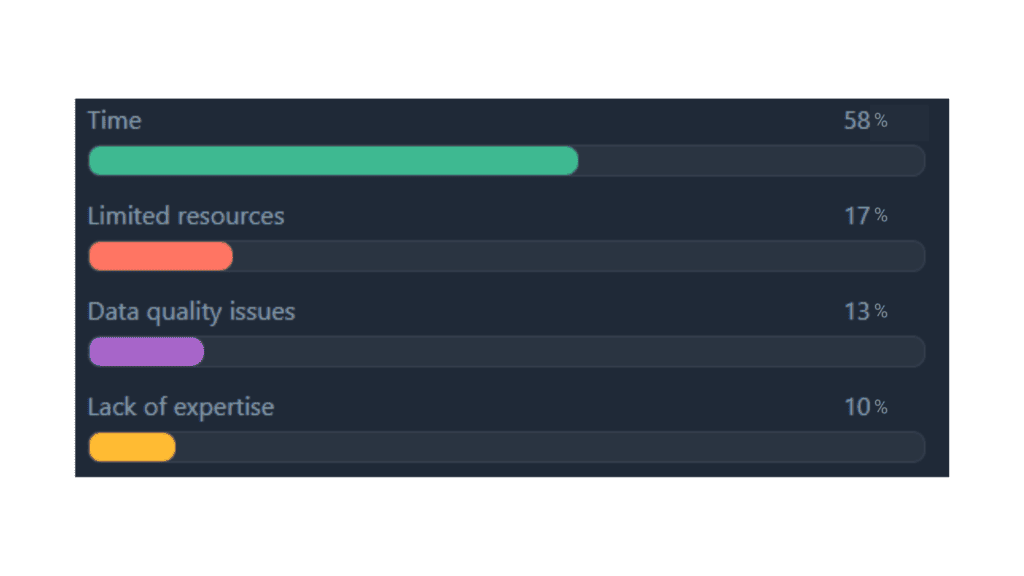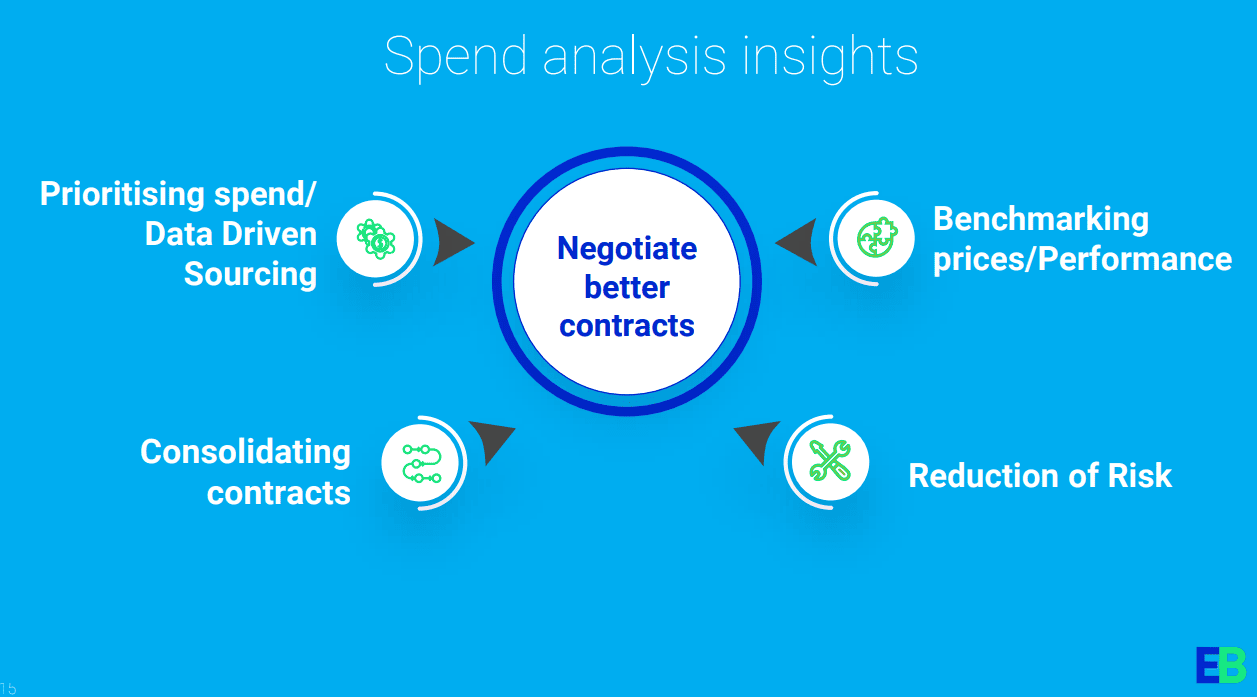How can analysing your spend save money for your school?
Now more than ever, spend visibility plays a pivotal role in laying the future groundwork of a school or MAT. School budgets are at an unprecedented level of uncertainty with continued aftereffects of the global pandemic and inflation levels running rampant, it’s absolutely critical to make sure your schools are gaining any possible savings.
The best way to find where those savings can be made is through undergoing a spend analysis.
What is spend analysis?
A spend analysis is a process of examining and analysing your school’s spending patterns, typically with the goal of identifying areas where money can be saved and spent more effectively.
The spend analysis process typically involves collecting and categorising data on all of your school’s expenditures, and then analysing that data to identify trends, patterns, and opportunities for improvement.
What are the benefits of a spend analysis?
There are four key benefits that come with undertaking a spend analysis, they are:
1. Cost savings:
By identifying areas where money is being wasted or where better deals could be negotiated, a spend analysis can help your school reduce their overall costs and save money.
This is especially the case if your school is overspending on certain goods or services without even realising it!
2. Budget optimisation:
A spend analysis can help you optimise your budgets, reallocating funds to areas where they are most needed or where they will have the greatest impact.
Particularly if you are a MAT, a spend analysis can highlight areas of redundant spending (different schools/departments purchasing the same product or service), to show what contracts can be consolidated to achieve further cost savings.
3. Improved procurement processes:
A spend analysis can also help improve your school’s procurement processes by identifying areas where purchasing practices can be streamlined or made more efficient.
The process can also highlight which suppliers are charging higher fees or failing to deliver on agreed-upon terms, giving you more negotiating power or the information needed to find a new, cost-effective supplier.
4. Better decision-making:
Lastly, through providing a comprehensive view of your school’s spending patterns, a spend analysis can help you make more informed decisions about where to allocate resources and how to prioritise spending.
It will also highlight any compliance or governance issues that may put your school or MAT at risk so that you can get a head start in addressing them and continue to operate in a compliant and ethical manner.
What are some of the key data points that a spend analysis can uncover?
The spend analysis process draws from a full breadth of data from your school or MAT, covering multiple financial years to put together an extensive snapshot of your spend that covers:
- Total spend – The total amount of money spent over a specific period of time
- Spend by category – Splits purchases up into categories i.e. ICT spend, facilities management spend to see which areas are a big spend areas)
- Spend by supplier – Analyses your spend with each supplier for your school
- Spend by department – Finds how much money is being spent in each department, such as administration, teacher and maintenance
- Spend by location – Where your school has been spending, like different facilities or in other campuses
- Spend by time period – Covers the amount of money spent over different time periods, be that monthly, quarterly or annually
- Purchase order accuracy – Reveals the accuracy of purchase orders placed by your school which reveals potential cost savings opportunities/process improvements
- Contract compliance – Ensures you are compliant with all contractual regulations
There are a lot of data points that can gain insight you have never had on your school or MATs spending habits, giving you brand new opportunities and cost-saving avenues to explore.
What is the spend analysis process?

The spend analysis process sounds complex but it can be broken down into seven easy steps. Before that though, you need to make a decision on the scope of the spend analysis. Do you want to focus on your entire school? MAT? Just one school? Just one part of a school?
After you have decided the scope, we move to the first proper step of the spend analysis.
Gather all the data from your financial ledger such as invoices, purchase orders, receipts (and in some cases supplier information) covering with the specific time period you want to work on. This can be a time consuming task if you are not already closely monitoring your contracts and spend.
If you aren’t, we recommend using a contracts register so you can keep all of your contracts and data surrounding them in one safe place.
Next, it’s time to consolidate your data.
We recommend you input your gathered data into one big database that falls under the same format, cleaning any data difficulties that come up in the process. Data difficulties can involve duplicate data, inaccuracies, corrupt records and even typos.
This can be a very manual process, however, data enrichment is an important task that gives you the comfort of knowing your data is up to its highest standard.
After that, we move to the third step – analysing the data.
Now it’s time to extract all the data from your database, to generate visuals such as charts and graphs that can help identify spending patterns and trends, compare spend across different categories, suppliers and time periods.
From this, you can start to gain a comprehensive view of your spending patterns, leading you into step four.
Identifying cost-saving opportunities is very closely linked to the previous step, based on the data analysis just done, identify key areas where costs can be reduced or further avoided.
An example of one way you can use the data analysis to identify cost saving opportunities is by identifying whether you are purchasing the same goods or services from multiple suppliers. By consolidating those purchases, you may be surprised at the financial outcome.
Alternatively, if we were to undertake the spend analysis for you, we may find that you are overpaying for certain goods or services that we can recommend be purchased for cheaper from a different supplier.
After that, we get to step five – identifying compliance and governance issues.
Due to being bound by the Public Contract regulations, your school will need to be vitally aware of the importance you need to place on compliance.
So, study the regulations you are bound by and make sure to highlight any non-conformities with procurement policy or legal/regulatory requirements so that they can look to be addressed immediately and next steps to fix them can be made.
Which takes us to the penultimate step. Based on the findings of the analysis, you should look to generate a 5-year plan that addresses cost-saving opportunities alongside any outlying governance and compliance issues that need to be squared away. This can also be called the creation of your Procurement Strategy.
The procurement strategy gives you all the information you need to address big risks or go after quick wins that have been identified in the analysis to achieve cost savings.
By implementing this action plan into your procurement activities you can then move towards the final step; monitoring and measuring progress.
You should measure the progress you are making in implementing this action plan into your existing procurement activities, by conducting follow-up analysis regularly to track spend patterns and potentially identify new cost-saving opportunities.
In doing so, you (and your school board) will be confident in the fact that you’re making informed purchasing decisions and operating in a compliant manner, long-term.
How does a spend analysis help you make more informed procurement decisions?
At the end of the day, data is king. By having a wealth of data to draw from and plan the next 5 years of procurement processes around, you can guarantee that the decisions you are making and recommending to your board are informed, saving money and supported by data.
You also ensure compliance in the long term by improving your procurement process. You can be safe in the fact that you will not have any non-compliances in the future by following policy as per the spend analysis’ recommendations.
Your high-performing suppliers will also be identified, meaning the best suppliers for your school or MAT that are delivering high-quality products at a competitive price will be highlighted – giving you more information as to which suppliers you would want to work with in the future.
Are there any challenges schools might deal with when conducting a spend analysis?
There are a few difficulties that can arise when attempting to undertake a spend analysis, with the biggest being the quality of the spending data a school may provide can vary drastically.
Spend data can sometimes be very detailed and well-organised however other times, the quality of the data can be lower. Data can be incomplete, inaccurate or outdated, making it difficult to conduct a meaningful and impactful analysis.
A school should have a good grasp of their financial data and we understand that also takes time, but by implementing the right systems and processes to properly capture and manage spending data, the school will benefit passively in the long-term anyway.
This does also tie into another difficulty that a school could face and that’s limited resources. If a school is struggling regarding spare time, staff or technology the spend analysis can be hampered as to how changes based on the spend analysis findings will be implemented.
This can also be the case if a school lacks the expertise to follow through on the data analysis and make the procurement decisions/plans necessary to implement change.
When asked in the webinar “What are your greatest obstacles to conducting a spend analysis?” Here were the results:

These challenges can be overcome by partnering with third-party, procurement experts that can help take you through every step of the procurement process and implement the changes based on spend analysis findings.
Education Buying recently worked with RNN Group to conduct a spend analysis, that evolved into a retainer partnership so that any procurement work is implemented and cost savings are achieved in the long-term. If you want to read more on this, click here.
How can a school use the information from a spend analysis?

The key message is ‘informed purchasing decisions’. The data provided from a spend analysis report will identify key areas of spend that highlight cost-saving opportunities while also providing you the data necessary to make you a more informed customer when negotiating with suppliers.
You will be able to control the narrative around your school’s expenditure and negotiate much more effectively with suppliers. There are two more specific ways in which you can use the information from a spend analysis, they are:
Benchmarking prices:
Using the data provided in the spend analysis report, you can compare prices across multiple suppliers for the same goods or services. Your school can confidently pick the best suppliers that are offering the best value for money or negotiate with existing suppliers for better pricing.
Consolidating contracts:
The spend analysis report will be able to highlight areas in which your school or MAT has multiple contracts for the same/similar goods or services. This gives you the opportunity to consolidate these contracts and negotiate better terms with a single supplier instead of spending across multiple suppliers.
An example of a spend analysis being put into practice can look like the following:
A school is purchasing textbooks from a supplier and they want to negotiate a better price. The school can conduct a spend analysis to understand how much they are spending on textbooks, which subjects require the most textbooks, and how much they are spending per student.
With this data, the school can approach the supplier and demonstrate the value they bring as a customer.
The school could then use this information to negotiate better pricing, improved service levels, and more favourable contract terms.
They could ask for a volume discount based on the number of textbooks they purchase each year or request free shipping / expedited delivery. Even negotiating more flexible payment terms.
To conclude, spend visibility is crucial in maintaining cost-effective contracts and saving your school money in the long-term. The best way to get great spend visibility is through undergoing a spend analysis.
This highlights key areas for quick wins, money-saving opportunities, areas of risk like compliance non-conformities, and gives you the data to make informed purchasing decisions.
With this data you can better negotiate with your suppliers, consolidate spending and use the report to implement a 5-year procurement plan to secure your school’s future.
If you’d like to undergo a spend analysis exercise, our procurement experts at Education Buying are happy to help you plan your next steps in saving money for your school.





